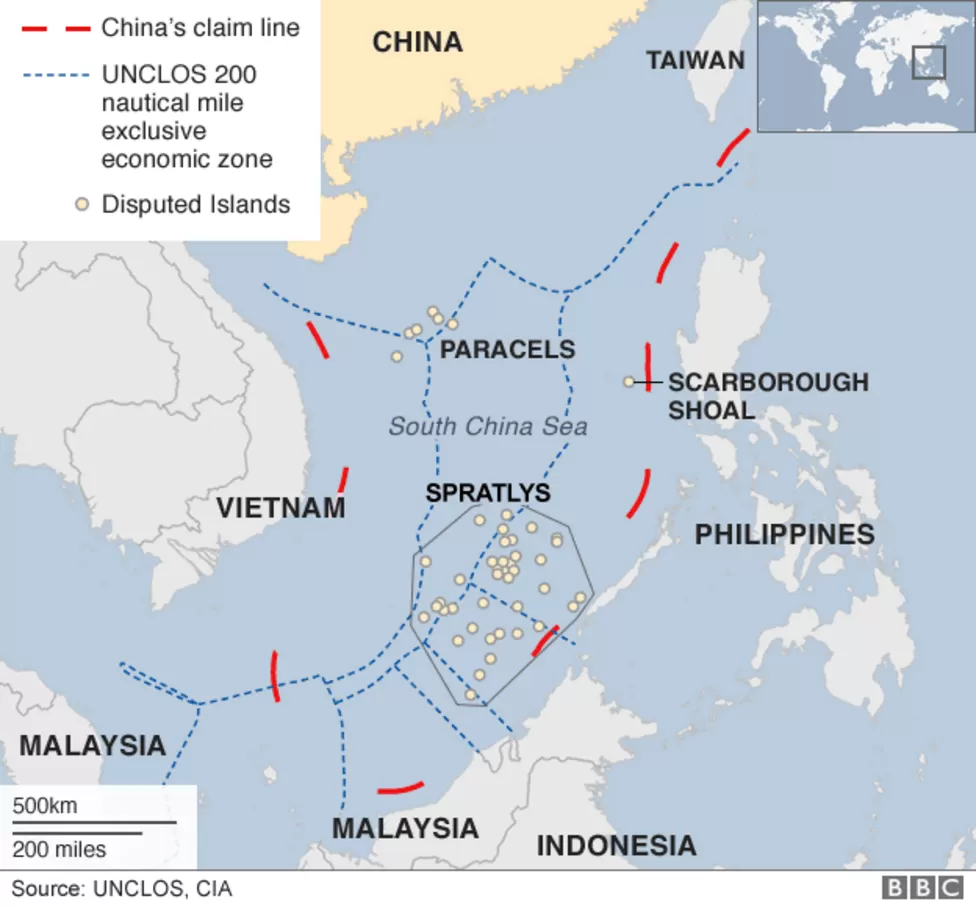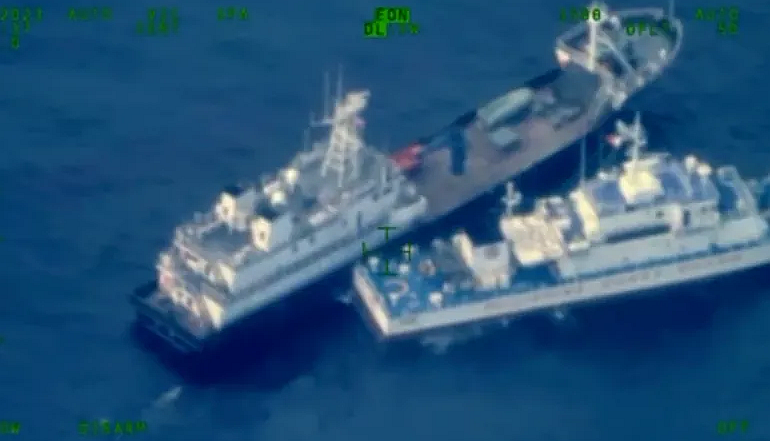The recent collision incidents – plural – are the latest in an escalating series of maritime disputes between China and the Philippines.
China and the Philippines are entangled in a blame game following a series of collisions in the contentious South China Sea, marking yet another episode in their ongoing maritime disputes within the region.
These confrontations took place near Second Thomas Shoal in the Spratly Islands, where China frequently deploys its vessels to assert territorial claims over nearly the whole of the vast South China Sea, angering everyone from Japan to India, and including Malaysia, Vietnam, and the Philippines on its list of neighbours upset by China’s “cartographic aggression.“
In fact, according to CNN, Beijing claims “indisputable sovereignty” over almost all of the 1.3 million square miles (3.37 million sq km) of the South China Sea, as well as most of the islands and sandbars within it, including those which are many hundreds of kilometres away from China’s mainland.
In 2016, an international tribunal in The Hague ruled in favor of the Philippines in a landmark maritime dispute, which concluded that China has no legal basis to claim historic rights to the bulk of the South China Sea.
Beijing has ignored the ruling.

Tensions with the Philippines have run particularly high of late, and the most recent incidents have only served to fuel the fire. China’s coastguard reported a “slight collision” between one of its ships and a Philippine vessel carrying supplies to a World War II-era transport ship used as an outpost on the shoal. According to China’s coastguard, this collision occurred as they lawfully obstructed the transport of “illegal construction materials” to the warship.
In response, Manila condemned the “dangerous blocking maneuvers” of the Chinese vessel in the strongest terms. During the routine resupply mission, a Philippine coastguard vessel was also “bumped” by a Chinese maritime militia vessel, as confirmed by Manila’s Task Force for the West Philippine Sea.
China, however, alleged that the Philippine boat deliberately reversed into a Chinese fishing vessel in a premeditated manner, provoking the incident. A video released by the Philippine military showed a brief contact between the bow of the Chinese coastguard ship and the stern of the resupply vessel, without clear indications of any damage.
These two nations have encountered numerous standoffs in various South China Sea areas in recent months, with Second Thomas Shoal, situated within the Spratly Islands, serving as a focal point for these disputes. As an example, in August, China Coast Guard vessels employed water cannon tactics to halt a Philippine resupply mission, preventing one of the boats from completing its cargo delivery.

The United States responded by reiterating its commitment to defend the Philippines in the event of an armed attack, as stipulated in the 1951 treaty. This reassurance came following reports of the most recent collision.
In further response to these incidents, Philippine diplomats summoned a high-ranking official from the Chinese Embassy in Manila on Monday to issue a stern protest. The collisions, which took place on Sunday, resulted in damage to a Philippine coast guard ship and a wooden-hulled supply boat operated by navy personnel, with no reported injuries.
In light of these developments, President Ferdinand Marcos Jr. convened an emergency meeting with the defense secretary and other high-ranking military and security officials to address the escalating tensions in the disputed waters. Several nations, including the Philippines, have consistently opposed China’s expansive territorial claims in the South China Sea and have sought the support of the U.S. military as these incidents continue to unfold.
Following the meeting, Defense Secretary Gilberto Teodoro strongly criticized China during a press conference for its use of “brute force,” which he argued placed Filipino crew members at risk. He also accused China of distorting the facts to conceal its aggressive actions.
For a good primer on the disputed territories in the South China Sea, which involves not only China and the Philippines, but also Taiwan, Vietnam, Malaysia, and Brunei, click here.
Reporting from Al Jazeera, BBC, CNN, and the Economic Times contributed to this article.
"ExpatGo welcomes and encourages comments, input, and divergent opinions. However, we kindly request that you use suitable language in your comments, and refrain from any sort of personal attack, hate speech, or disparaging rhetoric. Comments not in line with this are subject to removal from the site. "





















